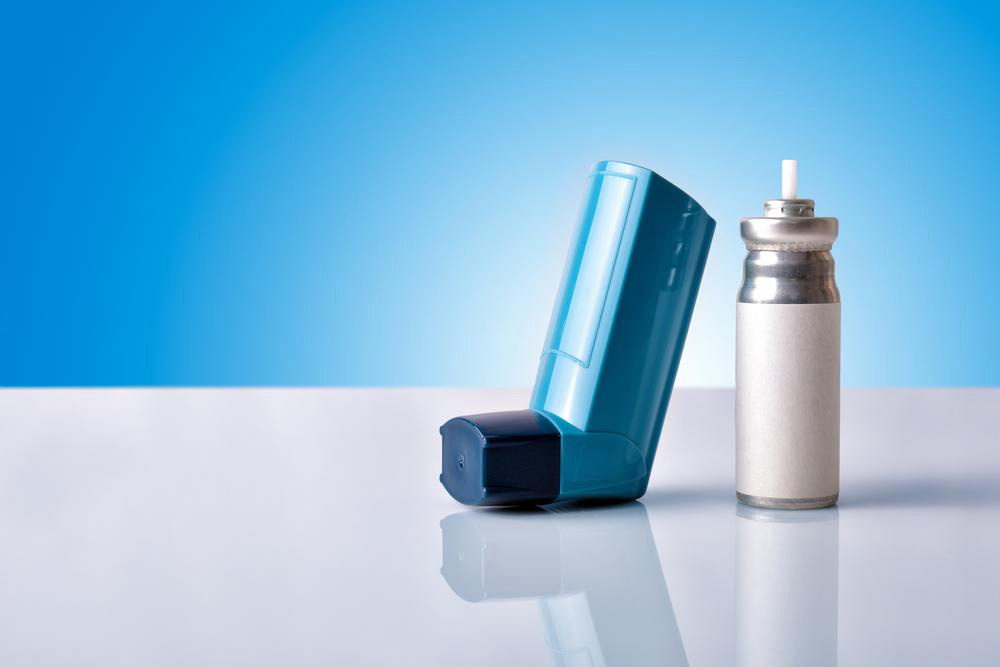Comprehensive Guide to Advanced Inhalers for Effective Asthma Management
This comprehensive article explores the various advanced inhalers used for asthma management, including metered-dose inhalers, breath-activated devices, inhalers with spacers, and nebulizers. It details their mechanisms, benefits, limitations, and suitability for different patient needs. Emphasizing proper technique and device selection, the article highlights how innovations continue to improve treatment efficacy and patient quality of life. Ideal for patients, caregivers, and healthcare providers seeking in-depth knowledge on modern asthma therapies, this guide aims to facilitate informed decisions for better respiratory health.

Comprehensive Overview of Modern Inhalers Used in Asthma Control
Asthma management has seen significant advancements over the years, mainly driven by the development of innovative inhaler technologies. These devices are essential tools for individuals living with asthma, providing critical medication delivery to manage and control symptoms effectively. Understanding the different types of advanced inhalers available today can help patients and healthcare providers make informed choices tailored to individual needs. This comprehensive guide explores the most common and effective types, including metered-dose inhalers, breath-activated devices, inhalers with spacers, and nebulizers, along with their respective features, benefits, and limitations.
The Evolution of Asthma Inhalers and Their Role in Disease Management
Asthma is a chronic respiratory condition characterized by airway inflammation and constriction, leading to episodes of wheezing, breathlessness, chest tightness, and coughing. Proper medication delivery is pivotal in preventing severe attacks and maintaining quality of life. Historically, inhalers have evolved from simple devices to sophisticated systems designed to maximize drug delivery efficiency while reducing user error.
Metered-Dose Inhalers (MDIs): The Classic Choice with Continued Relevance
Among the various inhaler types, the metered-dose inhaler (MDI) remains one of the most widely used and recognized devices for asthma treatment. Since its introduction over 40 years ago, it has become a staple in both home and clinical settings due to its portability, ease of storage, and the ability to deliver precise doses of medication with each actuation.
Mechanism of Operation: An MDI contains a pressurized canister filled with medication, which is released in a fine spray when the user presses down on the device. The design typically features an L-shaped body with a mouthpiece and a gas propellant system. When correctly used, the patient inhales the spray, allowing the medication to reach the lungs where it exerts its therapeutic effect.
Advantages: The simplicity of MDIs makes them accessible for most patients. They are portable, relatively inexpensive, and have a long shelf life. With proper technique, they provide rapid relief during asthma attacks and are suitable for both maintenance and rescue therapy.
Challenges and Limitations: Despite their advantages, MDIs pose certain challenges. They require proper coordination between inhalation and actuation—meaning patients need to press the device at the correct moment while inhaling deeply. Shaking the device before each use is crucial to ensure proper dosing, which can be overlooked or forgotten. Additionally, some users struggle to hold their breath long enough post-inhalation to maximize medication deposition in the lungs. These factors can lead to suboptimal drug delivery and lessen effectiveness, especially among elderly patients or children with coordination difficulties.
Advances such as the incorporation of anti-coagulant or anti-inflammatory agents, and the development of more user-friendly designs have helped improve the efficacy of MDIs over the decades. Yet, proper technique remains vital for optimal results, highlighting the need for patient education and regular inhaler technique reviews with healthcare professionals.
Breath-Activated Inhalers: Ease of Use with Some Limitations
Breath-activated inhalers are designed to address some of the coordination challenges posed by traditional MDIs. Unlike standard inhalers, these devices do not require manual pressing to release medication. Instead, they harness the force of the patient’s inhalation to trigger the release of the drug, simplifying the process for users.
How They Work: When a user inhales forcefully at the mouthpiece, the device detects the airflow and automatically releases the medication. This design eliminates the need to coordinate pressing and inhaling simultaneously, making it easier, particularly for children or elderly patients who may find manual activation difficult.
Advantages: The primary benefit of breath-activated inhalers is enhanced ease of use, reducing the risk of improper dosing due to poor coordination. They are particularly beneficial for patients who have difficulty pressing down during inhalation.
Limitations: However, these inhalers often tend to be larger and bulkier, which can impact portability. They also require a minimum inhalation force to trigger drug release, which might pose challenges for individuals with weak lung capacity or during severe asthma episodes. Moreover, consistent maintenance, such as cleaning and proper handling, remains essential to ensure device reliability.
Despite these limitations, breath-activated inhalers represent a significant step forward in inhaler technology, offering a user-friendly alternative for those who struggle with traditional MDIs.
Inhalers with Spacers: Enhancing Delivery and Reducing Errors
Another significant innovation in inhaler technology is the use of spacers—small reservoir chambers attached to the inhaler device. Spacers serve to optimize medication delivery by simplifying the inhalation process and decreasing the likelihood of medication wastage or improper technique.
How Spacers Work: When attached to an inhaler, spacers hold the medication released, allowing the user to inhale it gradually rather than in a rushing spray. Many spacers include a face mask, making them particularly useful for infants and patients with limited breathing strength who cannot generate sufficient inhalation force.
Advantages: Spacers significantly improve drug deposition in the lungs, especially for children and uncooperative patients. They reduce oropharyngeal deposition—the medication settling in the mouth and throat—thus minimizing potential side effects like hoarseness or thrush. Additionally, spacers help mitigate errors associated with timing and coordination, enhancing overall treatment efficacy.
Proper Maintenance: To ensure continued effectiveness, spacers must be cleaned regularly following manufacturer instructions. Inadequate cleaning can lead to bacterial buildup or malfunction, compromising medication delivery and posing health risks.
Nebulizers: Suitable for Severe Cases and Special Needs
Nebulizers are advanced devices that convert liquid medication into a fine mist, which patients inhale through a mask or mouthpiece. They are often used in hospital settings but are also available for home management, especially in severe or uncontrolled asthma cases.
How Nebulizers Work: These machines create a continuous aerosol spray of medication, allowing multiple inhalations over several minutes. They require a power source and are bulkier than portable inhalers but excel at delivering larger quantities of medication directly into the lungs.
Benefits: Nebulizers are particularly advantageous for patients who have difficulty using inhalers due to limited dexterity, young children, or individuals experiencing intense asthma attacks. Their ability to deliver high doses of medication makes them suitable for severe asthma management or during exacerbations requiring quick relief.
Limitations: The main drawbacks include the need for power sources, longer administration times, and the bulkiness of the device. Regular cleaning is necessary to prevent bacterial contamination. They are less portable than inhalers, which can be inconvenient for some patients.
Choosing the Right Inhaler: Personalized Asthma Treatment
Selecting the appropriate inhaler type depends on several factors, including age, manual dexterity, severity of symptoms, and patient preference. Healthcare providers play a vital role in evaluating individual needs and guiding patients toward the most effective device for their lifestyle and condition.
Proper inhaler technique and adherence to prescribed therapy are crucial for optimal disease control. Regular training, demonstrations, and reviews of technique can significantly improve treatment outcomes. The development of new inhaler technologies continues to enhance the therapeutic experience, making asthma management more effective and patient-friendly.
Future Trends and Innovations in Inhaler Technology
The field of inhaler technology is rapidly evolving, with ongoing research into smarter devices incorporating digital health features such as dose counters, inhalation monitoring, and connectivity to mobile apps. These advancements aim to improve adherence, provide real-time feedback, and enhance overall disease management.
Materials and designs are also advancing toward more lightweight, eco-friendly, and user-centric devices to promote sustainable and convenient asthma care worldwide.
Conclusion
Understanding the different types of advanced inhalers and their features is essential for effective asthma management. From traditional metered-dose inhalers to modern nebulizers, each device has its unique advantages and considerations. Proper education on technique, regular device review, and personalized selection are key components in achieving optimal respiratory health.




